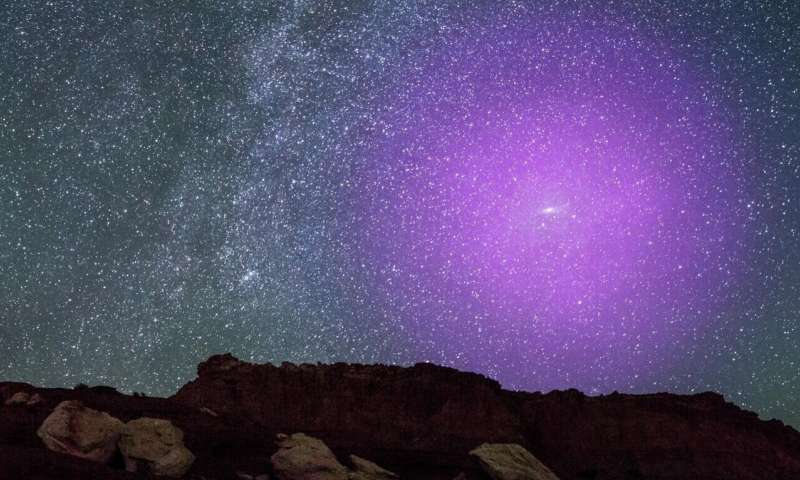At https://phys.org/news/2020-08-hubble-giant-halo-andromeda-galaxy.html … NASA sientists, using the Hubble Space Telescope, have mapped out an immense envelope of gas, called a halo, surrounding the Andromeda galaxy, the nearest galaxy to the Milky Way. It is a nearly invisible halo of diffuse plasma that extends halfway towards our own galaxy, the Milky Way. This actually implies Andromeda's halo is actually banging up against the halo of our galaxy. This sounds, in a loose fashion, like a giant version of the heliosphere, which surrounds our solar system, or the even smaller magnetosphere of planets within the solar system, such as the earth. Can it be that galaxies have similar structures to star systems, such as our solar system. The link, of coourse, doesn't mention this similarity, or coincidence. It interprets the halo via mainstream orthodox views of cosmology, as one might suspect. They are reporting a reality. They are not in the business of contradicting consensus.

At https://phys.org/news/2020-08-infrared-eruption-stellar-mass-black.html … continuous infrared winds disccovered during the eruption of a stellar mass black hole. It is of course assumed to be from a black hole, but that is by the by. Constant infrared emissions were detected during what is thought to have been an eruption of a black hole in an x-ray binary. Previously, such activity has only been detected in wavelength ranges such as x-rays – or within the visible spectrum. The study provides the first evidence that winds are present throughout the evolution of the eruption.
Meanwhile, at https://phys.org/news/2020-08-maunakea-observatories-pairs-merging-super… … the Maunakea observatories on Hawaii discover three pairs of merging supermassive black holes, that are rapidly feeding on the abundant matter of each of their neighbour's galaxies. Or that is the general idea. A cosmic dance between two merging galaxies, each one containg a supermassive black hole, that are munching away like a hungry dog. The feeding creates the phenomenon of a qasar we are told. This is a rare find for a sky watcher yet here we have astronomers spoilt for choice, three of them. Fascinating stuff.
